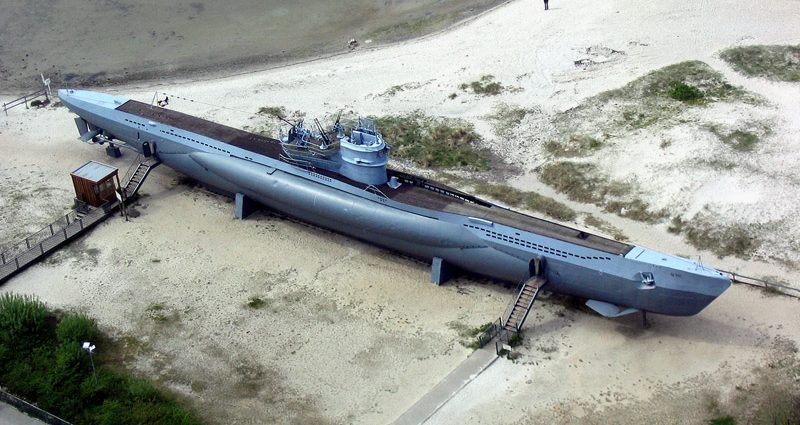It was June of 1944 when the U-1105 was finally commissioned and began her short career in the service of the Kriegsmarine. At 220 ft long, with a 20ft beam, she displaced 850 tonnes when submerged. She was a pretty big boat! Her cruising speed was about 17 kts on the surface, and a little over 7 kts while submerged.
But what probably made her even more interesting is that she was one of fewer than 10 U-boats to be outfitted with a synthetic black rubber coating. This was WWII era stealth technology, designed to defeat allied sonar detection. The appearance of this coating earned her the nickname “Black Panther.”
Having seen some action around Ireland, sinking a Royal Navy frigate (HMS Redmill), her career ended abruptly on May 4, 1945 when she was notified that the war was over. On May 10 she was surrendered to the Royal Navy in Scotland. She bounced around in the service of the Royal Navy for a bit until she was finally turned over to the US in 1946, for study of her unique skin.
After a bit of study, she was then towed to Solomon’s Island for explosives testing. Basically, they sunk her and raised her 2 times before towing her to an anchorage about a mile off Piney Point, where they sunk her a final time with a 250 lb depth charge. Accounts say she lifted out of the water, ripped open, and sunk to the bottom in about 20 seconds.
At the time, no markers were left to show her final resting place. When noting the location, a transposing error led many to believe she went down somewhere in the Atlantic Ocean. She was pretty much lost to history until she was re-discovered in 1985 by a group of scuba divers led by Uwe Lovas.
In 1995, she became the first ship in Maryland’s Historic Shipwreck Preserve program, and today she is maintained by the Maryland Historical Trust. Most of her hull is buried in river silt, but the conning tower is still visible at about 65 ft of water. Boaters in the area may notice a white mooring buoy with a blue stripe that is anchored about 70 ft away from the actual wreck. There may also be a smaller marker buoy that is attached directly to the conning tower.
Now, before you go busting out that dive gear, there’s a few things to consider. There are no commercial dive ops that service the wreck. Visibility is near zero down there most of the time, and there’s always a very strong current. It’s not exactly a pleasure dive in the Bahamas. Here’s a video of a dive on a more “clear” day:
More info can be found at the Maryland Historical Trust website, including this handy Dive Guidelines publication.


